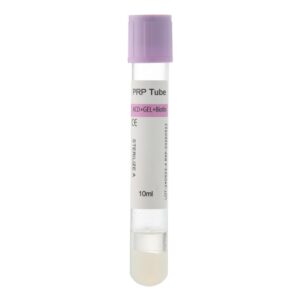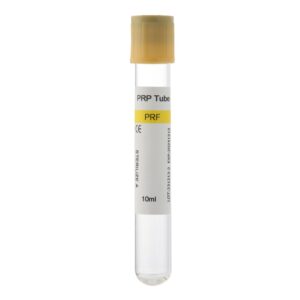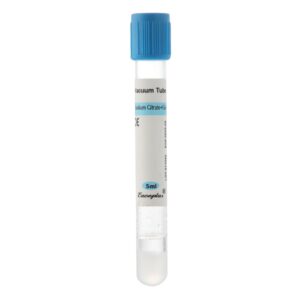The Difference Between ACD-A and ACD-B in PRP. In the rapidly evolving field of regenerative medicine, Platelet-Rich Plasma (PRP) therapy stands out for its versatility and efficacy. For laboratory personnel and medical consumable distributors, the quality of PRP is paramount, and it begins with the very first step: the choice of anticoagulant in the collection tube. The market is saturated with options, but two of the most prevalent anticoagulants are Acid Citrate Dextrose Solution A (ACD-A) and Acid Citrate Dextrose Solution B (ACD-B). Understanding the nuanced differences between these two is crucial for ensuring optimal outcomes for patients and providing the best products to clinicians.
What Are ACD-A and ACD-B?
At its core, Acid Citrate Dextrose (ACD) is a sterile solution that prevents blood from clotting once clinicians draw it from the patient. This function is essential in PRP preparation because it keeps the whole blood sample fluid, allowing clinicians to centrifuge it and concentrate the platelets. Both ACD-A and ACD-B contain the same three key ingredients, and each plays a specific role:
- Trisodium Citrate: This is the primary anticoagulant. It works through a process called chelation, in which citrate ions bind to free calcium ions in the blood. Since calcium is an essential factor in the coagulation cascade, this binding action effectively halts the clotting process.
- Citric Acid: This component acts as a stabilizer and helps maintain a consistent pH within the solution. By making the blood more acidic, it can also help to maximize platelet recovery during processing.
- Dextrose: This is a simple sugar (a form of glucose) that serves as a nutrient and energy source for the platelets and other blood cells. This helps to preserve their structural integrity and viability throughout the preparation process, which is essential for a high-quality PRP product.
While both solutions utilize this same fundamental mechanism, the key distinction between them—and the source of their different performance characteristics—lies in the specific concentration of these ingredients.

How the Choice of ACD-A or ACD-B Impacts PRP Quality
The decision between ACD-A and ACD-B has tangible consequences for the quality of the final PRP product, affecting everything from platelet yield to growth factor release.
Platelet Concentration and Viability: Research and clinical experience strongly suggest that ACD-A is superior for preserving platelet morphology and function. The composition of ACD-A creates a more favorable environment for platelets during centrifugation, leading to a higher yield of viable, functional platelets. Some studies indicate that PRP prepared with ACD-A can achieve a platelet enrichment of 5 to 7 times the baseline, with over 90% of platelet activity retained. In contrast, ACD-B may result in slightly lower enrichment (4-6 times) and around 85% platelet activity retention. For therapeutic applications where a high concentration of platelets is essential, this difference is significant.
Growth Factor Release: The ultimate goal of PRP therapy is to deliver a high concentration of growth factors to stimulate tissue repair. Studies have shown that PRP prepared with ACD-A often leads to a higher release of key growth factors, such as Platelet-Derived Growth Factor (PDGF) and Transforming Growth Factor-beta (TGF-β). One study noted that PRP from ACD-A showed 20-30% higher levels of PDGF within an hour of activation compared to other anticoagulants. ACD-A enhances the release of growth factors by better preserving platelet integrity.
Clinical Applications: The choice of anticoagulant can also be influenced by the intended clinical use. In fields like orthopedics, where robust tissue regeneration is paramount, the higher platelet concentration and growth factor release associated with ACD-A are highly desirable. For aesthetic procedures, while platelet concentration is still important, patient comfort is also a factor. Ensuring you have access to consistently high-performing PRP tubes is key to clinical success; we invite you to explore the product specifications on the Siny PRP website to learn more.
FAQs
Q: What is the main difference between ACD-A and ACD-B in PRP tubes?
A: The main difference is the concentration of the ingredients. ACD-A has a higher concentration of trisodium citrate, citric acid, and dextrose compared to ACD-B, making it a more potent anticoagulant.
Q: Which is better for PRP preparation, ACD-A or ACD-B?
A: While both are effective, ACD-A is generally considered superior for preparing high-quality PRP. It tends to result in higher platelet concentration, better platelet viability, and a greater release of essential growth factors.
Q: Why is dextrose included in the ACD solution?
A: Dextrose is a sugar that acts as a nutrient for the platelets. It helps to preserve their cellular health and function while they are outside the body during the preparation process.
Q: How does ACD prevent blood from clotting?
A: The citrate in the solution binds to calcium ions in the blood. Since calcium is essential for the coagulation cascade to proceed, this binding action effectively stops the blood from clotting.
Q: Can the choice of anticoagulant affect the final therapeutic outcome?
A: Yes, absolutely. The quality of the PRP is directly linked to its therapeutic potential. An anticoagulant like ACD-A, which better preserves platelet function and leads to higher growth factor release, is more likely to produce a PRP product that yields better clinical results.
Summary
In conclusion, the choice between ACD-A and ACD-B is not a minor detail but a critical decision that profoundly impacts the quality and therapeutic potential of Platelet-Rich Plasma. For laboratory professionals striving for accuracy and distributors committed to providing the best medical consumables, understanding that ACD-A’s higher concentration generally yields a superior product with greater platelet viability and growth factor release is key. By prioritizing products that use the optimal anticoagulant and come from reputable manufacturers, you are not just purchasing a consumable; you are investing in reliability, consistency, and ultimately, better patient outcomes. We encourage you to make this informed choice to elevate the standard of PRP preparation in your practice. For more information on high-quality PRP solutions, contact the experts at Siny PRP today.





